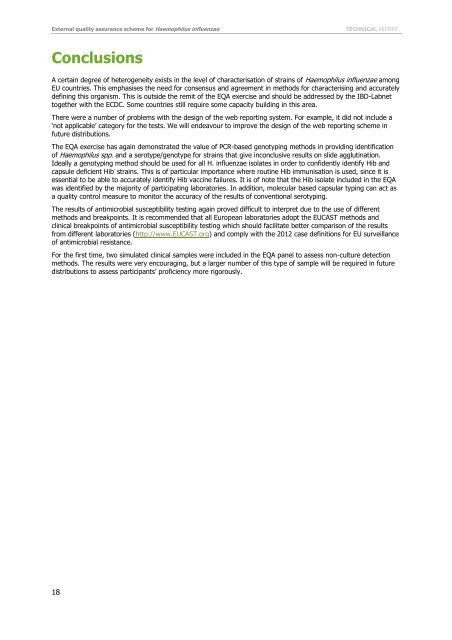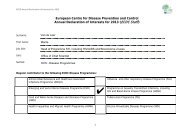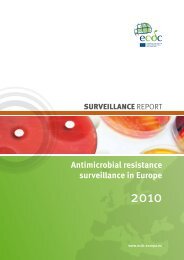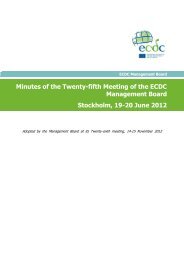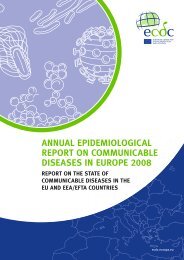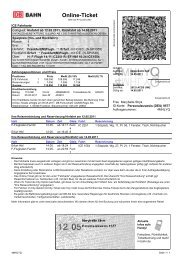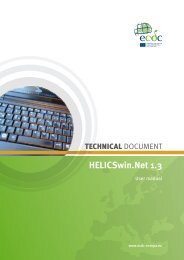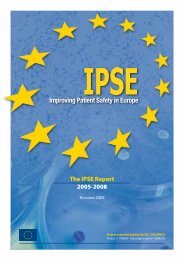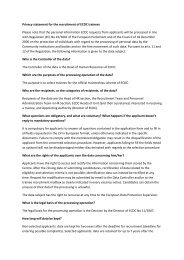External quality assurance scheme for Haemophilus influenzae 2011
External quality assurance scheme for Haemophilus influenzae 2011
External quality assurance scheme for Haemophilus influenzae 2011
You also want an ePaper? Increase the reach of your titles
YUMPU automatically turns print PDFs into web optimized ePapers that Google loves.
<strong>External</strong> <strong>quality</strong> <strong>assurance</strong> <strong>scheme</strong> <strong>for</strong> <strong>Haemophilus</strong> <strong>influenzae</strong><br />
TECHNICAL REPORT<br />
Conclusions<br />
A certain degree of heterogeneity exists in the level of characterisation of strains of <strong>Haemophilus</strong> <strong>influenzae</strong> among<br />
EU countries. This emphasises the need <strong>for</strong> consensus and agreement in methods <strong>for</strong> characterising and accurately<br />
defining this organism. This is outside the remit of the EQA exercise and should be addressed by the IBD-Labnet<br />
together with the ECDC. Some countries still require some capacity building in this area.<br />
There were a number of problems with the design of the web reporting system. For example, it did not include a<br />
‘not applicable’ category <strong>for</strong> the tests. We will endeavour to improve the design of the web reporting <strong>scheme</strong> in<br />
future distributions.<br />
The EQA exercise has again demonstrated the value of PCR-based genotyping methods in providing identification<br />
of <strong>Haemophilus</strong> spp. and a serotype/genotype <strong>for</strong> strains that give inconclusive results on slide agglutination.<br />
Ideally a genotyping method should be used <strong>for</strong> all H. <strong>influenzae</strong> isolates in order to confidently identify Hib and<br />
capsule deficient Hib - strains. This is of particular importance where routine Hib immunisation is used, since it is<br />
essential to be able to accurately identify Hib vaccine failures. It is of note that the Hib isolate included in the EQA<br />
was identified by the majority of participating laboratories. In addition, molecular based capsular typing can act as<br />
a <strong>quality</strong> control measure to monitor the accuracy of the results of conventional serotyping.<br />
The results of antimicrobial susceptibility testing again proved difficult to interpret due to the use of different<br />
methods and breakpoints. It is recommended that all European laboratories adopt the EUCAST methods and<br />
clinical breakpoints of antimicrobial susceptibility testing which should facilitate better comparison of the results<br />
from different laboratories (http://www.EUCAST.org) and comply with the 2012 case definitions <strong>for</strong> EU surveillance<br />
of antimicrobial resistance.<br />
For the first time, two simulated clinical samples were included in the EQA panel to assess non-culture detection<br />
methods. The results were very encouraging, but a larger number of this type of sample will be required in future<br />
distributions to assess participants’ proficiency more rigorously.<br />
18


